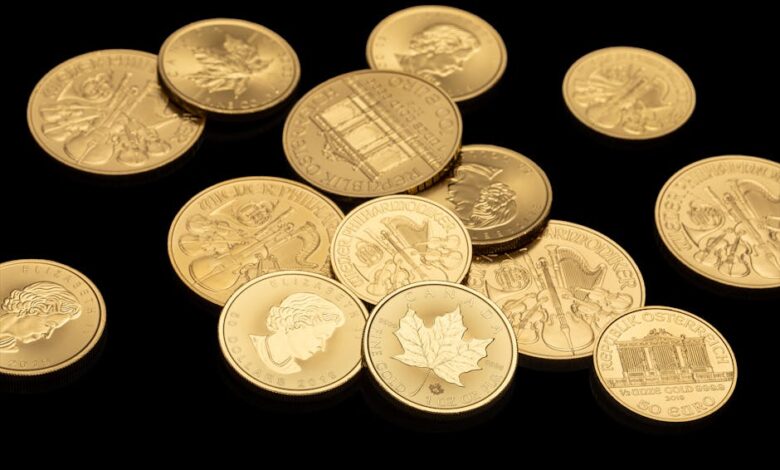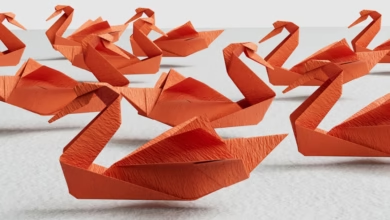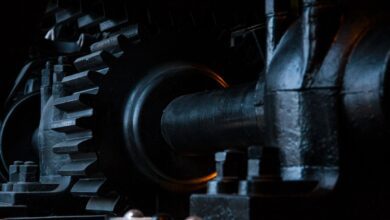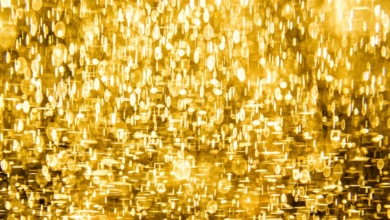Unlocking the Value of Precious Metals: Insights into Gold, Silver, Platinum, and Palladium Markets and Their Uses in 2024

**Introduction**
In an ever-evolving global economy, precious metals like gold, silver, platinum, and palladium hold a significant place, not only as valuable assets but also as essential components in various industries. Understanding the intricate dynamics of these metals—ranging from their role in investment strategies to their applications in industrial sectors—provides invaluable insights for both investors and consumers alike. With the rise of sustainable metal production and innovative technologies such as 3D printing, the landscape of precious and industrial metals is transforming rapidly. This article delves into the multifaceted world of precious metals, exploring their market roles, lifecycle from mining to recycling, and emerging trends that are shaping gold investing, silver investing, and beyond. Join us as we navigate the metallic maze, uncovering how these metals are not only integral to jewelry and construction but also pivotal in aerospace, energy, and automotive applications. Whether you are a seasoned investor or a curious learner, this exploration of precious and industrial metals will equip you with the knowledge to understand their significance in today's market.
- 1. "Understanding Precious Metals: The Role of Gold, Silver, Platinum, and Palladium in Today’s Market"
- 2. "From Mining to Recycling: Exploring the Lifecycle of Precious and Industrial Metals"
1. "Understanding Precious Metals: The Role of Gold, Silver, Platinum, and Palladium in Today’s Market"
In today’s market, understanding precious metals—specifically gold, silver, platinum, and palladium—requires a keen awareness of their diverse applications and economic significance. These metals, categorized as precious metals, differ from industrial or base metals like steel, aluminum, and copper, as they are often valued for their rarity and unique properties. Gold and silver have long been associated with jewelry and investment, whereas platinum and palladium have carved out essential roles in industrial applications, particularly within the automotive and aerospace sectors.
Gold investing remains a popular choice for those seeking a hedge against inflation and economic uncertainty. As a non-ferrous metal, gold is not only a symbol of wealth but also a critical component in various electronic devices. Silver, often referred to as a precious metal and industrial metal, is equally versatile, finding uses in electronics, solar energy production, and medical applications. Its conductivity and antibacterial properties make it indispensable in modern technology.
Platinum and palladium, on the other hand, are primarily known for their roles in catalytic converters within vehicles, making them vital energy metals in the push for greener technologies. The growing emphasis on sustainable metal production has heightened the demand for these metals as industries seek to reduce emissions and enhance efficiency. As such, the metal commodities market for platinum and palladium has seen significant fluctuations, driven by the automotive industry's transition to electric vehicles.
Moreover, the concept of metal recycling has gained prominence, particularly for precious and rare earth metals. The recycling process not only conserves resources but also reduces the environmental impact associated with metal mining. As industries increasingly adopt metal fabrication techniques, including 3D printing metals, the ability to repurpose materials is becoming crucial for sustainability.
In conclusion, the interplay between precious metals and their industrial counterparts reflects broader trends in metallurgy and material science. As global demand for construction metals and battery metals rises, understanding the market dynamics of gold, silver, platinum, and palladium is essential for investors and consumers alike. Keeping an eye on metal trends can provide valuable insights into the future of both precious and non-ferrous metals in our evolving economy.
Precious metals, including gold, silver, platinum, and palladium, play a vital role in various industries and investment strategies. These metals are categorized differently from industrial metals, such as steel, aluminum, copper, and zinc, which primarily serve practical applications in construction, automotive, and aerospace sectors. Precious metals, on the other hand, are often viewed as safe-haven investments and are heavily sought after for their intrinsic value and rarity.
Gold investing remains popular due to its historical status as a store of value and a hedge against inflation. Investors often turn to gold commodities during economic uncertainty. Silver, frequently referred to as the "poor man's gold," also has significant investment appeal and is widely used in jewelry and electronics. Its conductivity makes it an essential component in numerous industrial applications, showcasing its dual role as both an investment asset and a crucial industrial metal.
Platinum and palladium are classified as rare earth metals and are primarily utilized in catalytic converters for automobiles, which help reduce harmful emissions. The increasing focus on sustainable metal production has amplified the demand for these precious metals in the automotive industry. Moreover, as battery technologies evolve, platinum and palladium are now being explored for their potential applications in energy metals and renewable energy solutions.
Metal recycling plays a crucial role in the sustainability of the metal industry. By recovering precious and industrial metals from end-of-life products, we can mitigate the environmental impact of metal mining and reduce the need for new metal extraction. This is particularly important as the world shifts towards more sustainable practices in metallurgy and metal fabrication. The recycling of non-ferrous metals, such as aluminum and copper, not only conserves resources but also reduces energy consumption compared to primary metal production.
In addition to traditional uses, the rise of 3D printing metals is revolutionizing manufacturing processes across various industries. This innovative technology allows for the creation of complex metal alloys with enhanced properties, leading to improved performance in applications ranging from aerospace to automotive components. As industries strive for efficiency and reduced material waste, 3D printing is becoming an increasingly relevant trend in metal production.
As we look ahead, understanding the dynamics of the precious metals market, including the interplay between gold, silver, platinum, and palladium, is essential for investors and businesses alike. With the ongoing developments in metal trends, including battery metals for electric vehicles and sustainable practices in metal fabrication, the future of precious and industrial metals appears both promising and challenging.
2. "From Mining to Recycling: Exploring the Lifecycle of Precious and Industrial Metals"
The lifecycle of precious and industrial metals encompasses several critical stages, from extraction through recycling, highlighting their importance in various applications. It begins with metal mining, where raw materials are sourced from the earth. Precious metals like gold, silver, platinum, and palladium are often mined alongside non-ferrous metals such as copper and aluminum, which are essential for various industries. The extraction process can vary significantly depending on the metal type, with techniques ranging from open-pit mining to underground operations.
Once extracted, these metals undergo metallurgy processes to enhance their properties. This can involve refining techniques that produce high-purity metals suitable for investment and industrial applications. For instance, gold investing has seen a resurgence, driven by its status as a safe-haven asset, while silver investing is increasingly popular in the context of renewable energy technologies.
The subsequent phase of metal fabrication transforms these refined metals into usable forms. Construction metals like steel and aluminum are fabricated into components for buildings and infrastructure. Similarly, aerospace metals such as titanium and specialized alloys are essential for manufacturing aircraft, where strength-to-weight ratios are critical.
Recycling plays a vital role in the lifecycle of metals, significantly affecting sustainability and resource efficiency. Metal recycling not only conserves energy but also reduces the need for metal mining, which can be environmentally damaging. Precious metals, due to their high value and rarity, are often recovered from electronic waste and jewelry metals, contributing to a circular economy.
The recycling of base metals like copper and zinc is equally crucial, especially in industries such as automotive and energy. Battery metals, particularly lithium and cobalt, are increasingly recycled to meet the growing demand for electric vehicles (EVs) and renewable energy storage solutions.
Furthermore, the trends in metal recycling are evolving with advancements in technology, including 3D printing metals that allow for on-demand production and minimized waste. The future of sustainable metal production lies in the integration of these innovative methods, ensuring that both precious and industrial metals remain viable resources for generations to come.
As we explore the lifecycle of metals, it's clear that understanding the interplay between mining, fabrication, and recycling is essential for maximizing the benefits of these valuable resources while minimizing their environmental impact.
In conclusion, the precious metals market—encompassing gold, silver, platinum, and palladium—remains a vital component of both the investment landscape and various industrial applications. As we explored throughout this article, these metals not only serve as a hedge against inflation and a store of value for gold investing and silver investing, but they also play significant roles in sectors such as aerospace, automotive, and energy. The lifecycle of precious and industrial metals, from metal mining to recycling, highlights the importance of sustainable metal production and the growing trends in metal recycling.
Moreover, as we embrace advancements in metallurgy and 3D printing technologies, the demand for various metal alloys, including base metals like aluminum, copper, and zinc, continues to rise. This shift towards sustainable practices in metal fabrication and construction metals is crucial for reducing metal corrosion and enhancing the longevity of products.
As we move forward, staying informed about metal trends will be essential for investors and industry professionals alike. By understanding the dynamics of precious metals and their intersection with ferrous and non-ferrous metals, we can better navigate the evolving landscape of metal commodities and capitalize on emerging opportunities in sectors ranging from jewelry to battery metals.
Ultimately, the interplay between precious and industrial metals not only shapes our economy but also drives innovation in sustainable practices that are vital for a greener future.
**References:**
(Include relevant sources and citations here.)





